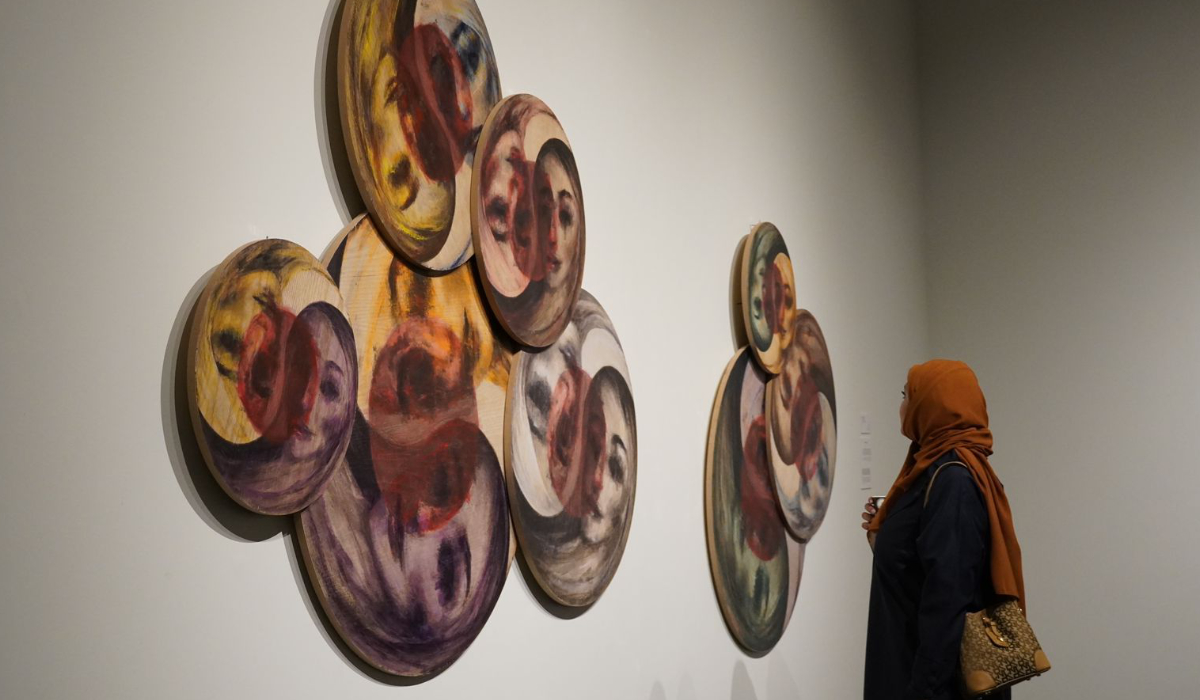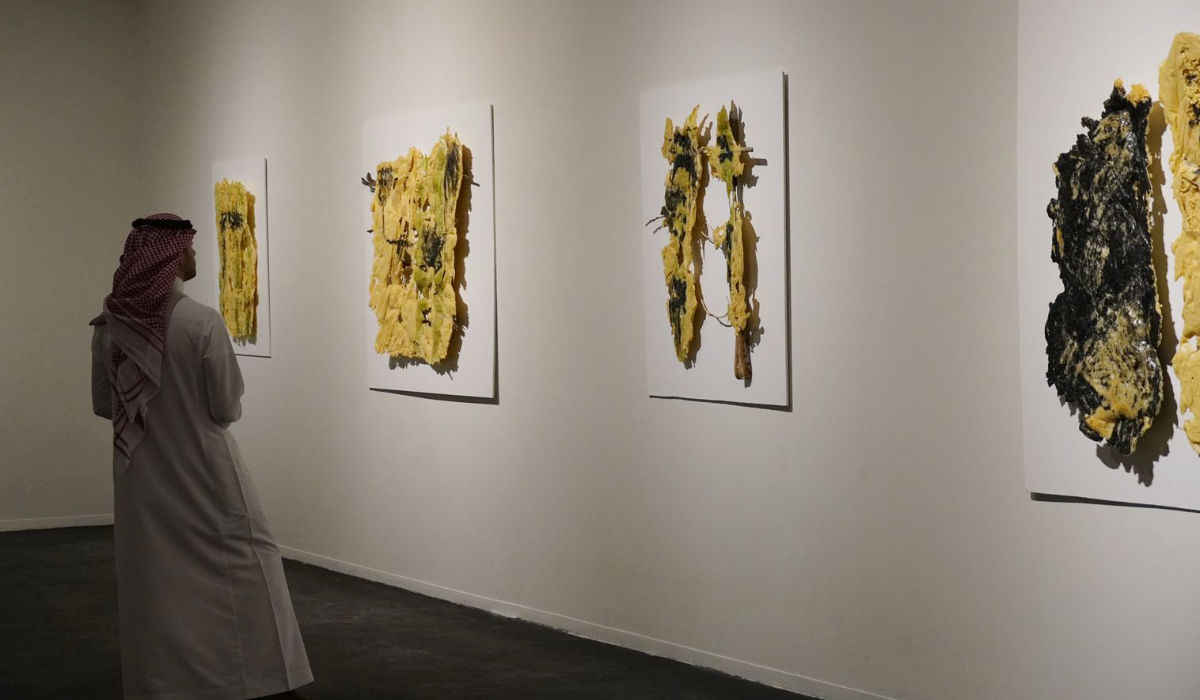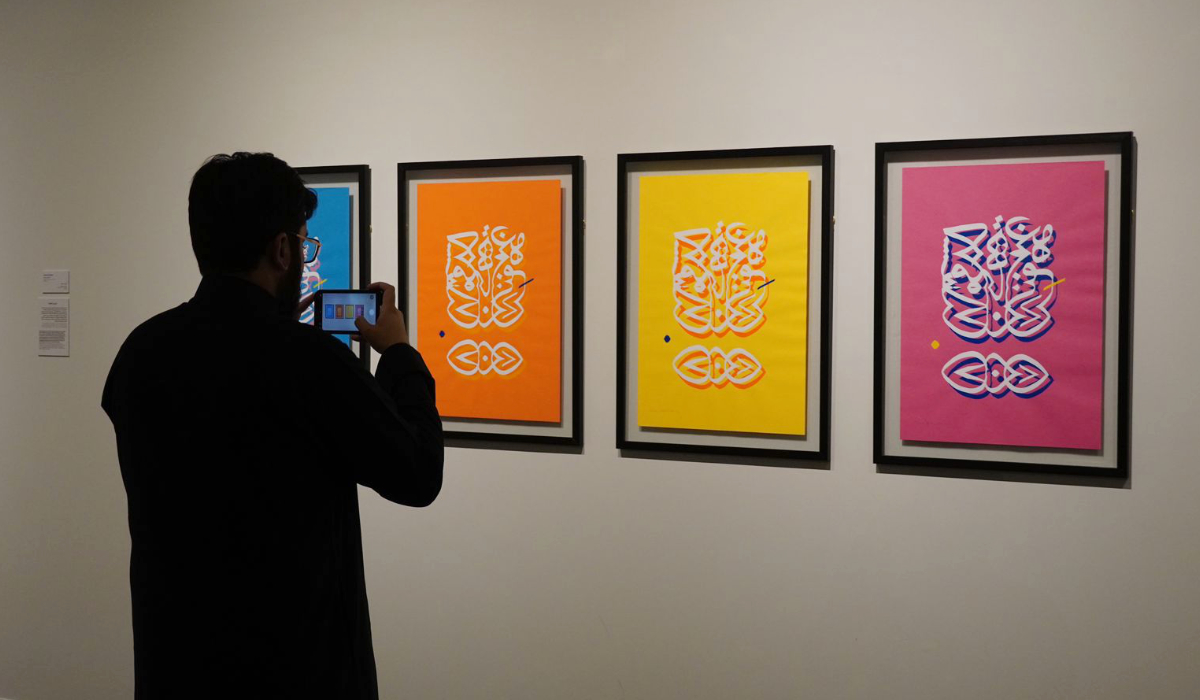RIYADH: In Shashai Studio’s latest exhibition, “Delicacy of Dualities,” seven artists and one creative studio from the Kingdom explore the theme “intricate dance of opposites”.
The exhibition in Diriyah’s Jax District showcases a series of thought provoking artworks and installations from artists Nada Al-Ali, Maan Alabbadi, Nouf Alsharif, Rasha Saddiq, Abdullah Al-Bugami, Eida Alzahrani, Ahmad Haddad, and Makhtut Studio.

The exhibition in Diriyah’s Jax district showcases a series of thought-provoking artworks and installations from several artists. (Supplied)
Each artist tells a profound and personal story, including Al-Bugami, who dedicated his three artworks to the powerful duality of woman and man.
In some traditional and conservative societies, such as parts of Saudi Arabia, some women may choose to wear the burqa, a cultural garment that covers the entire body and includes a mesh screen to cover the face.
This exhibition exemplifies the power of artistic collaboration and the ability of artists to create profound narratives.
Khayria Refaat, Curator
Women who practice this tradition choose to cover themselves in front of everyone, including their husband and family members.

The exhibition in Diriyah’s Jax district showcases a series of thought-provoking artworks and installations from several artists. (Supplied)
“The burqa is considered the identity of the badu woman. Some people may see it as something that is quiet or sad, because it is black, but I decided to portray my aunt, who is in her 70s and I have never seen her face,” he said.
“One time, I accidentally saw her face and I could not recognize her. But, with that being said, behind the covering, when I greet her, I feel a deep and profound sense of love and belonging.”

The exhibition in Diriyah’s Jax district showcases a series of thought-provoking artworks and installations from several artists. (Supplied)
One of Al-Bugami’s artworks is handwoven using the sadu sewing technique, an ancient skill made famous by Saudi women in the north of the Kingdom. It is characterized by its bright colors and intricate weaving, and is registered on UNESCO’s list of intangible cultural heritage.
Sadu is usually performed by women, but Al-Bugami chose it as his medium to portray the sense of woman in his work.
“The pattern in the middle is an old design used in the past, and I decided to depict this pattern as if it resembles a woman. I decided to put the design in the middle because she is the foundation of the home; she is the most important part. I could not put the design in a corner, otherwise the home won’t be balanced.”
Al-Bugami has worked on a series of artworks that reflect his views on the vital role of women in life.
“For a while I have been working on a concept that depicts things within humanity that complete one another, such as the man and woman, life and death, Adam and Eve ... I have worked on this project using charcoal, acrylic, and sadu.
“Life is man and woman; what would a man do without a woman and what would a woman do without a man? You can’t have one thing without the other. We have to have the duality of both, like night and day.”
The exhibition is curated by Khayria Refaat, who said in a statement: “This exhibition exemplifies the power of artistic collaboration and the ability of artists to create profound narratives. ‘Delicacy of Dualities’ invites viewers to question and explore the boundaries of perception while discovering the hidden beauty within the dance of opposites.”






























